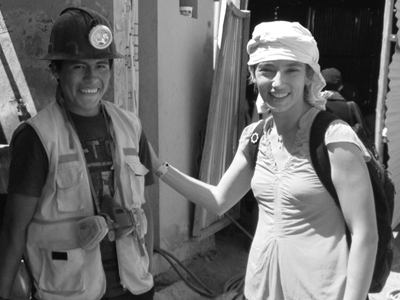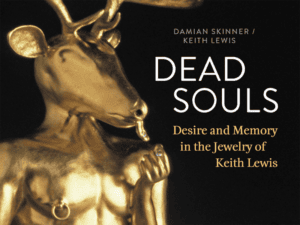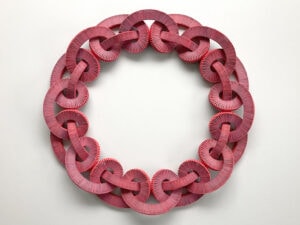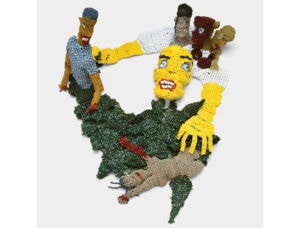Matthew Hart, GOLD: The Race for the World’s Most Seductive Metal. New York: Simon & Schuster, 2013
ISBN 978-1451650020
“What are you reading?” I nearly knocked over my coffee in surprise when the smoky voice of the waiter cut through my focus. At the dining counter, Gold, Matthew Hart’s newest 290-page work of nonfiction, had captured my full attention over a well-researched and exasperating chapter on the invisible gold of Nevada. The words elicited memories of an unforgettable personal experience—being face to face with the expansive open pit mines that devour the geologically famous Carlin Trend, one of the richest gold deposits on earth.
The reader of Gold is lucky, holding a privileged position next to Hart on every adventure. Hart engages through revealing interviews, historical research, and dangerous travel across continents and time to understand the human obsession with this powerful material. Subtitled The Race for the World’s Most Seductive Metal, the book stays true to this mission and provides an inside look at how gold’s physical properties have seduced humanity into hunting it down to transform it into beautiful objects and money; into celebrating it through otherworldly mythologies; and finally into designing a global financial complex that lends this yellow metal a most powerful influence on our lives everyday.
Except for a few practical uses, gold is a notional construct. It has no meaning but its price. Even the jewelry market hangs on that consideration—whether gold as a material is worth more than something else. Gold has moved far from its original place in the human imagination. (p 227).
The first mention of objects made with gold is in chapter 1, following a vivid description of the deep, dark, and sweltering Mponeng mine of South Africa. We don’t know what the mines of Thrace were like but can assume that they, too, were dangerous and, for the miners, the very heart of darkness. The gold artifacts found in a Thracian tomb—an accidental discovery that opened the door to a culture rich with stunning, artfully crafted treasures—included jewelry, a golden nail, and a thin ribbon of gold. The gold of the Incan empire was transformed into objects of utility and celebration, but as in the Thracian culture, not into money. The concept of gold as currency has changed everything.
“I [Livermore] get lonely sometimes, too,” he admitted, “living in those motel rooms, spending all day by myself. I ask myself why I am prospecting. It’s not to be rich. It’s nice to have the money, but, honestly, that’s not why I do this. I don’t know. It’s something about the finding.” (p 90)
John Sealy Livermore, a geologist, unraveled the geologic mystery of Nevada’s Carlin Trend in 1960. Thanks in part to his research, the US held the position of the third largest gold-producing nation for years because of the Carlin Trend gold. But Livermore’s obsession with finding, and his ability to brilliantly decode millions of years of geological transformations, have come with an environmental and humanitarian cost that makes Livermore’s words—“It’s something about the finding”—absolutely infuriating. The more than 43,000 acres of disturbed land, the millions of gallons of pure water pumped out of open pits, the mountains of waste rock, the acid mine drainage, and the mercury emissions resulting from mining the trend are the irrevocable collateral damage of the hunt.

Hart’s text carefully and diligently explains some of the more complicated financial systems humans have built around gold. Hart gets us as close as a non-insider can get to the inner workings of the über-secretive, closed-door system that is used to fix the international gold price twice per day by the London Bullion Market Association (LBMA). Members of the LBMA system claim to achieve a fair price based on what the market will bear by comparing bids until an equilibrium between selling price and buying price is achieved. Everyone buying and selling gold relies on this system. The gold price is the most significant factor in determining profitability for miners; even seemingly small decreases in price, fluctuations in the price of an ounce of gold of just $20 from one day to the next, can put a large-scale mining company in a lurch and jewelers, too. (An ounce of gold, on the 14th July 2014, is valued at $1321)
If hand-made golden thrones—objects—exposure to the mind of the exploratory geologist—the hunt—and insider perspectives on gold’s role in international finance—the gold market—aren’t enough to persuade one to read Gold, Hart’s compelling storytelling should be. Travel with Hart drops the reader into a mine at a rate that pops the eardrums. He takes trips back in time to the Oval Office when Nixon killed the gold standard, and then forward to present-day communist China where thousands of artisanal mines and a few large-scale state-run companies bring more gold to the market than any other nation. Peter Munk, the recently retired chairman of Barrick Gold, the largest gold-mining company in the world, wishes mine protestors would get out of his way; Hart gets him to sit for a rare interview, and then travel begins again to the current hot spot, the Democratic Republic of Congo, where geopolitics, gold fever, luck, and devastating loss dominate.
There is a glaring omission in this otherwise well-researched book: I wish that Matthew Hart had stepped deeper into the plight of the unlucky miners and their golden dreams. He could have put his narrative skills at the service of this rarely discussed aspect of gold extraction and consumption, to help all of us to know those who toil personally, invite us to empathize, to try to understand their lives. Approximately 15 million people world-wide struggle to survive as artisanal and small-scale miners. They are often driven to mine with their own two hands because there is no other option. Conditions are harsh, dangerous, and tense because these miners often mine illegally and in rudimentary conditions. What gives miners a competitive edge in the race for the diminishing untapped, lucrative gold deposits? Most of the time it is luck. It is the kind of luck that the majority of gold miners—approximately 15 million people world-wide, representing 90% of the gold-mining labor force—can only wish for. By the end of Gold we know the names, leisure activities, and even possessions of some of the world’s richest gold mine owners, but not the name of a single artisan miner (‘Artisan’ miner is the term used to describe the independent miner. Other ways to think about it are small-scale, or subsistence. This is a distinctly different miner than those employed by big companies.)
Gold is a unanimously satisfying material with which to make things. Makers expect it to willingly take on new forms, to glow with the richness and warmth associated with the sun, and to nobly resist tarnish and decay. It is the human desire for this yellow metal that gives gold the chaotic life of a rock star. Hart’s book Gold deftly tells a story about how we humans have been seduced. As new international initiatives like Fairmined and Fairtrade gold, which aim to legitimize artisanal miners, achieve a fair wage, and safeguard the environment are demonstrating, it may be that the disenfranchised, unnamed miners in Hart’s account can write a new reality for gold—one of pride, equity, and transparency. This gold, in the hands of creative and sincere artisans, will shine like nothing we have seen before.






